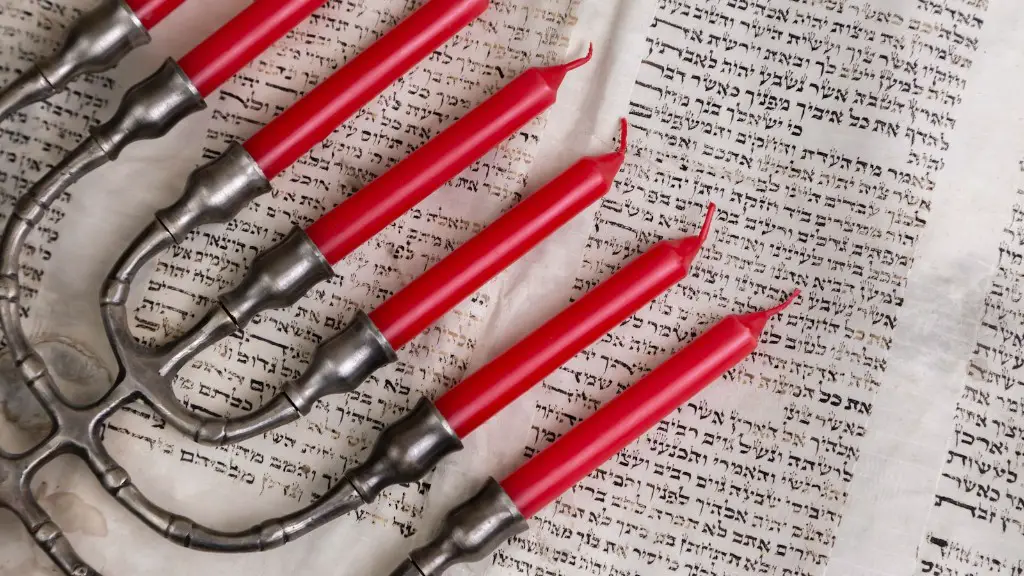What Is A Golem In Judaism
A golem is a being from Jewish folklore. It is an artificial humanoid creature made from clay or mud, which has been brought to life mostly by the power of God, or sometimes by the use of mysterious superior knowledge. The word “golem” is derived from the same root as the Hebrew word “Galam”, meaning “something unfinished or incomplete”. The earliest known reference to golems is in the Talmud, which speaks of golems that were supposedly created to perform manual labor. Later, golems were used in Jewish magical practices and legends, which describe the use of such creatures to defend settlements or fight battles.
There are stories of Jewish mystics who created golems to guard and protect Jews from their enemies. One of the most popular of these was the golem of Rabbi Judah Loew ben Bezalel, the Maharal of Prague. Legends have it that he created a golem out of clay from the banks of the Vlatava river and animated it with incantations of the Hebrew alphabet. He used the golem to protect the Jewish people from their enemies and to assist them in other tasks.
Today, the golem of Prague is seen as an example of Jewish folk magic or Kabbalah. The golem came to symbolize the tremendous power of faith, and its creation is seen as a demonstration of faith in the power of God. The golem is also a symbol of the potential of human creativity and the ability to use knowledge to create something from nothing.
In modern times, the golem is used as a metaphor in philosophical writings, literature, and art. It has come to represent an analogy for the human condition, as well as an embodiment of the idea of resistances or striving against an oppressive force. The golem is often seen as a figure of hope and of resistance against the odds.
The Golem’s Role In Judaism
In Judaism, the golem is seen as a spiritual being whose function is to serve as a protector of the Jewish people and as an instrument of Divine will. It is believed that the golem can be used as a tool of divine intervention in times of distress. The golem also serves as a reminder of the power of faith, of the capacity of the human spirit to overcome difficult circumstances and take action to make the world a better place.
The golem is also seen as a symbol of innocence and of the fragility of life. It can also be seen as a kind of paradox, as its power is seen as coming from its artificial nature, yet it also is seen as an object of immense power, an example of the potential of humanity. Thus, the golem is an important symbol in Judaism, a reminder of the potential that lies within all of us, and of the power of faith and creativity.
Has The Golem Caused Problems?
Though the golem can be seen as a beneficial figure in times of distress, some Jewish scholars view it with a certain ambivalence. For example, some argue that the golem is essentially an artificial being that can be used to enact God’s will, but that it can also be misused as a tool for evil. The use of a golem also raises difficult questions regarding the responsibility of humans for their actions, and the limits of human understanding.
Many Jewish thinkers have warned against using the golem for unrighteous purposes and cautioned against using its power improperly. In some legends, the golem begins to act beyond its creator’s control, leading to chaotic and unpredictable consequences. These cautionary tales serve as reminders of the power of faith, but they also point to the tremendous responsibility in shaping our own destiny.
Though the golem is a symbol of great power and potential, it is also seen as a symbol of the need to exercise caution and restraint when it comes to using that power. In this way, the golem stands as a reminder of the balance between power and wisdom, between creation and limits.
Modern Influences Of The Golem
The concept of the golem has influenced many works of literature and art in the modern age. For example, the famous novel Frankenstein by Mary Shelley features a proto-golem in the form of the creature that Dr. Frankenstein creates from bits of corpses. The themes of creativity, power, and responsibility in Shelley’s novel have led many to draw parallels between it and the golem of Jewish folklore.
In addition, many modern authors, including Philip K. Dick, Alan Moore, and Jonathan Lethem, have drawn on the idea of the golem in their work. In each of these cases, the golem is seen as a powerful symbol of creativity, strength, and responsibility — a figure of hope in the face of difficult odds.
Though the golem is a creature of myth, it has come to take on a renewed importance in modern life. Its story serves as an example of the power of creativity and faith, of our ability to shape our own destiny and take action to make the world a better place. The golem remains an inspirational figure, and its myth is as relevant today as ever.
How Can The Golem Teach Us?
The golem is an inspirational figure that can teach us a great deal about the power of faith and creativity. It can teach us to embrace our own power and to use it wisely and responsibly. It can also teach us to be mindful of the power of our actions, and to take responsibility for their consequences. The golem is a reminder that we have the power within us to shape our own destiny, and an example of the power of creativity and faith.
The golem is also a reminder of the power of stories and symbols. It is a creature of myth and legend, yet it speaks to us in a very modern age. In this way, the golem can serves as a powerful symbol of the power of belief and of the capacity to create something out of nothing — to use faith and creativity to shape our own destiny.
The Meaning Of The Golem In Modern Culture
In modern culture, the idea of the golem has continued to capture the imagination. It is often seen as a symbol of hope and of resistance in the face of difficult odds. Films such as The Iron Giant, The Matrix, and The Frankenstein Syndrome have used the golem as a symbol of power and resilience, a reminder of the power of belief and creativity. In popular culture, the golem has come to represent a figure of hope


